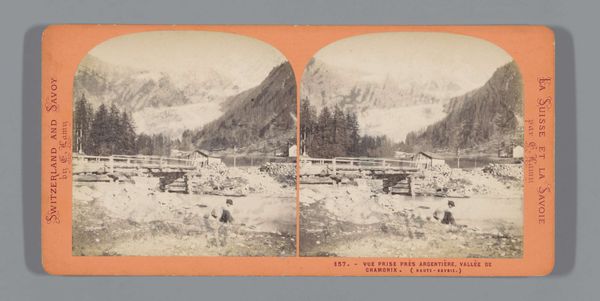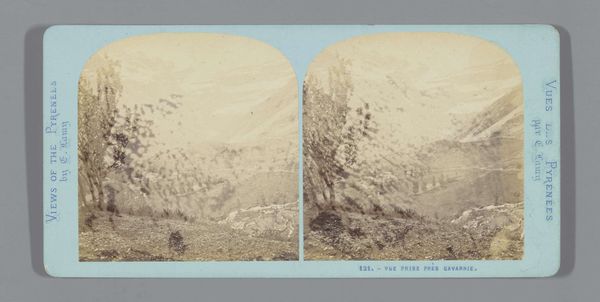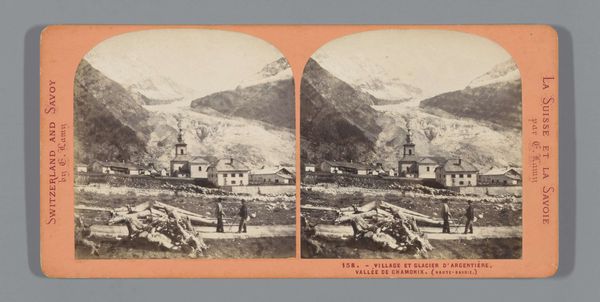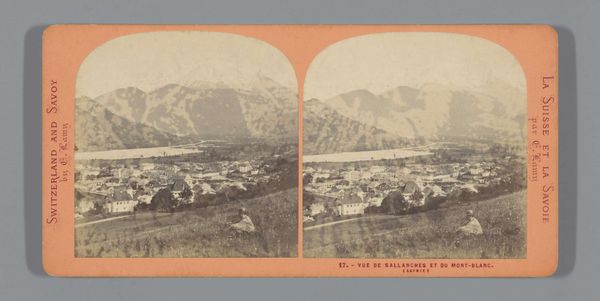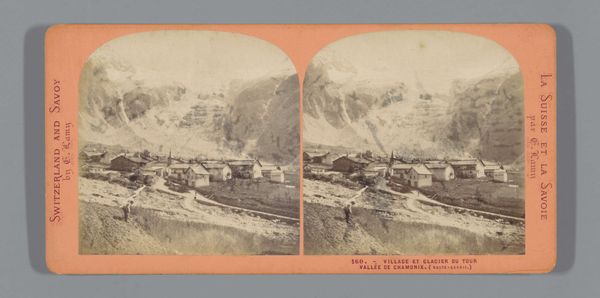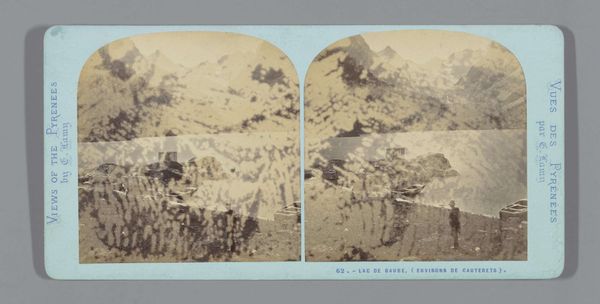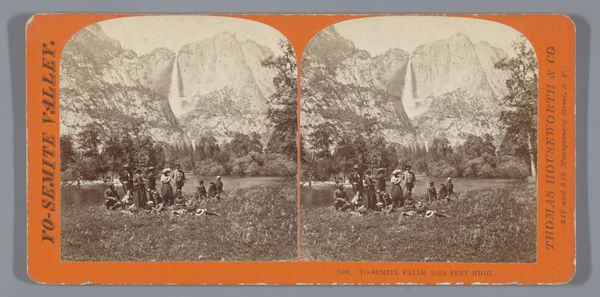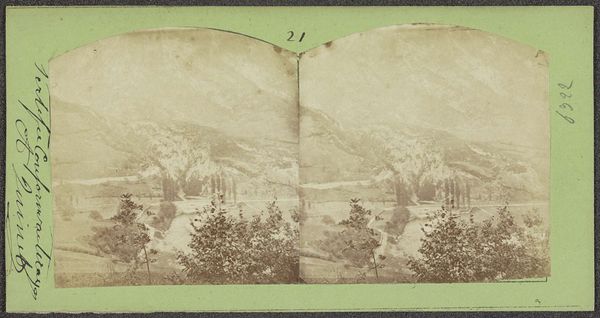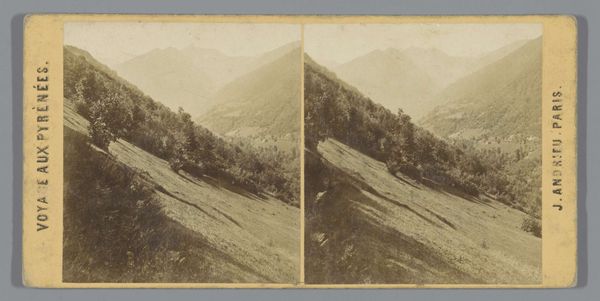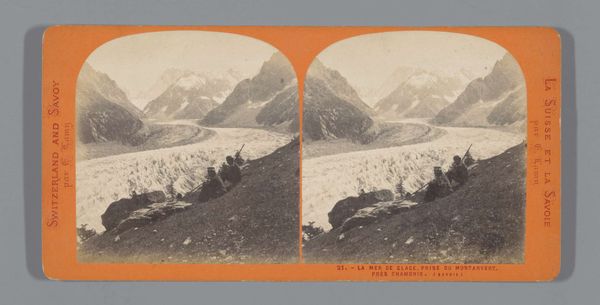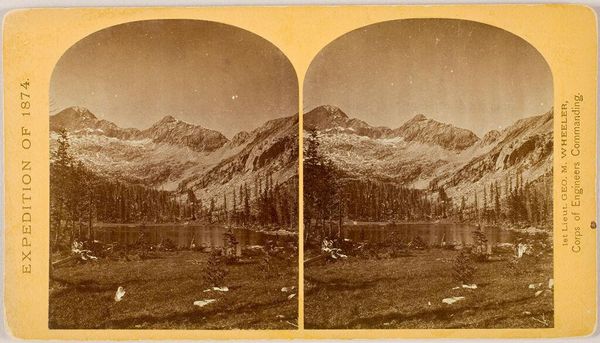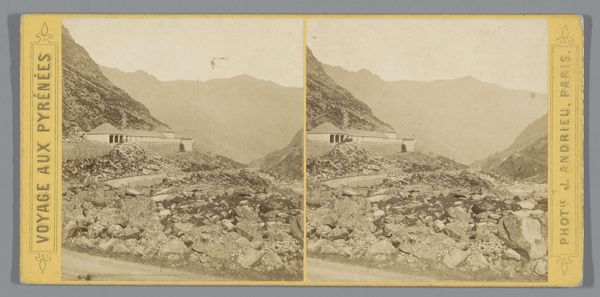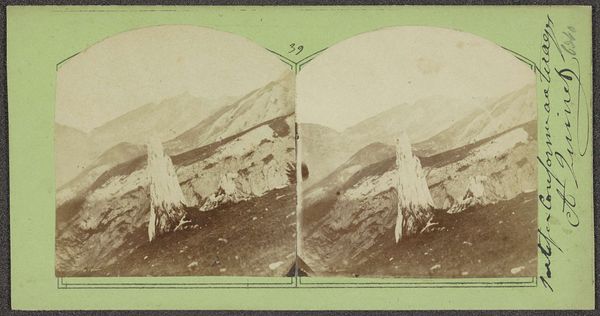
Dimensions: height 85 mm, width 170 mm
Copyright: Rijks Museum: Open Domain
Curator: What strikes me about this image is the almost theatrical staging of nature, quite typical for the romantic period. Editor: Yes, it certainly has a performative element. This is a stereoscopic gelatin silver print, titled "Gezicht op een dal nabij Chamonix" or "View of a Valley Near Chamonix" by Ernest Eléonor Pierre Lamy, dating from about 1860 to 1880. Stereoscopic images like this were very popular; they created an illusion of depth. Curator: And the composition underscores that constructed perspective. We have these clearly defined planes – the foreground with a solitary figure, the middle ground with modest buildings, and then this dramatic backdrop of the imposing, almost oppressive mountain. The power dynamics are palpable! Editor: Precisely! This speaks directly to the socio-political climate of the time. These images were consumed by a burgeoning middle class, eager for accessible vistas of power and natural beauty. Tourism, enabled by the emerging railroad system, fueled demand for images reinforcing these sublime views, cementing a sense of national identity and colonial dominance over the natural world. Curator: So the viewer gets a pre-packaged experience of nature, confirming their place in a social order. It makes me consider questions of access and the very construction of landscape. The romantic gaze becomes a colonizing gaze. What about the individual barely visible in the foreground? They look rather anonymous and dwarfed. Editor: A crucial point. In that moment, are they just a token, serving the larger symbolic drama? The lack of agency highlights the control that institutions exerted upon both individuals and natural resources, offering us today important lessons concerning equity and the power dynamics that influence perceptions of value. Curator: Thinking about art as part of these larger power narratives, its influence can’t be denied. This photograph provides just such a portal into thinking critically about the complex relationship of art, nature, and power. Editor: And the continued need to scrutinize how those relationships shape our perceptions still today.
Comments
No comments
Be the first to comment and join the conversation on the ultimate creative platform.
